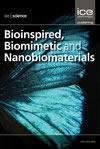Bioactivity-guided nanoparticle synthesis from Zingiber officinale and Mentha longifolia
IF 0.6
4区 工程技术
Q4 ENGINEERING, BIOMEDICAL
引用次数: 0
Abstract
To date, various reports have exhibited the antidiabetic activity of plant extracts, but this activity could be improved through the conversion of plant bioactives into metal nanoparticles. Aqueous plant extracts were prepared from two plants, Zingiber officinale and Mentha longifolia. Silver nanoparticles from aqueous plant extracts were synthesized and characterized through spectroscopic techniques, including ultraviolet–visible spectroscopy and Fourier transform infrared spectroscopy and scanning electron microscopy, in comparison with their respective plant extracts. After successful synthesis, these nanoparticles were evaluated for biological potentials of antioxidant, antimicrobial and antidiabetic activities. The nanoparticles of both plants offered outstanding antidiabetic potential, but the silver nanoparticles of Z. officinale showed the highest inhibition potential of 80.52% to α-amylase even at lower concentrations. The synthesized nanoparticles were found to be better antimicrobial agents against Bacillus subtilis and Escherichia coli as measured through a well diffusion assay as compared with aqueous extracts. These nanoparticles offered antioxidant potential that was better than that of their plant extracts but was slightly lower than that of the positive control gallic acid. This study gives a direction for improvement of the biological activity of plant-based medicine through green synthesis of silver nanoparticles.生物活性引导下药用生姜和薄荷纳米颗粒的合成
迄今为止,已有各种报道表明植物提取物具有抗糖尿病活性,但这种活性可以通过将植物生物活性转化为金属纳米颗粒来提高。以生姜和薄荷两种植物为原料制备水提物。通过紫外可见光谱、傅里叶变换红外光谱和扫描电镜等光谱技术,合成了植物水提取物中的纳米银,并对其进行了表征。合成成功后,对这些纳米颗粒进行了抗氧化、抗菌和抗糖尿病活性的生物学评价。两种植物的纳米颗粒均具有显著的抗糖尿病作用,但在较低浓度下,银纳米颗粒对α-淀粉酶的抑制作用最高,达到80.52%。通过孔扩散实验,与水提取物相比,合成的纳米颗粒对枯草芽孢杆菌和大肠杆菌具有更好的抗菌作用。这些纳米颗粒提供的抗氧化潜力优于其植物提取物,但略低于阳性对照没食子酸。本研究为绿色合成纳米银提高植物性药物的生物活性指明了方向。
本文章由计算机程序翻译,如有差异,请以英文原文为准。
求助全文
约1分钟内获得全文
求助全文
来源期刊

Bioinspired Biomimetic and Nanobiomaterials
ENGINEERING, BIOMEDICAL-MATERIALS SCIENCE, BIOMATERIALS
CiteScore
2.20
自引率
0.00%
发文量
12
期刊介绍:
Bioinspired, biomimetic and nanobiomaterials are emerging as the most promising area of research within the area of biological materials science and engineering. The technological significance of this area is immense for applications as diverse as tissue engineering and drug delivery biosystems to biomimicked sensors and optical devices.
Bioinspired, Biomimetic and Nanobiomaterials provides a unique scholarly forum for discussion and reporting of structure sensitive functional properties of nature inspired materials.
 求助内容:
求助内容: 应助结果提醒方式:
应助结果提醒方式:


